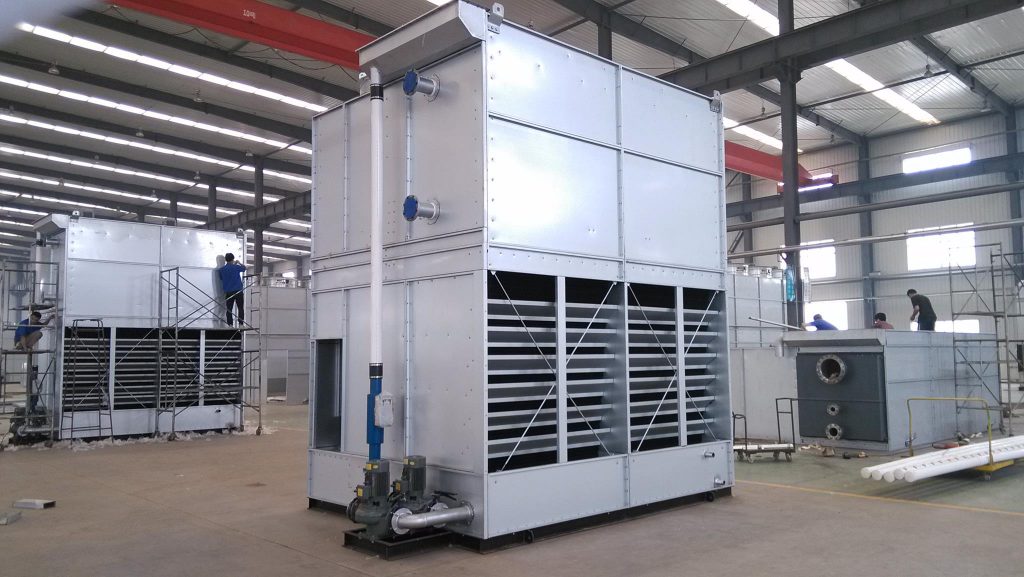Why Evaporative Cooling?
The advantages of evaporative cooling stem from several key factors. First, evaporative cooling process use the ambient wet-bulb temperature of the entering air as the heat sink, which is typically 10°F to 30°F lower than the dry bulb, depending on the local climate. The lower the temperature of the heat sink, the more efficient will be the process.
Second, the evaporative cooling process involves both latent and sensible heat transfer (primarily latent) where a small portion of the recirculating flow is evaporated to cool the remaining water. For every pound of water evaporated into the air stream, approximately 1,050 Btu of heat is rejected. In contrast, a pound of air at standard conditions has a heat content of only 0.24 Btu/1b-°F, meaning that much greater air volume is required to reject the same heat load in air cooled (sensible only) cooling systems as compared to evaporative cooled systems.
Third, due to water’s ability to efficiently transport large quantities of heat over relatively long distances, water-cooled systems allow the economical separation of the process equipment and heat rejection equipment.
Fourth, evaporative cooling towers allow direct contact between the water and the air, which is a highly efficient process. This mixing occurs in the fill, sometimes called the wet deck, which is typically comprised of sheets of thermo formed plastic. The fill provides a large amount of low-cost surface area for air and water to contact each other.
These reasons combine to explain why evaporative cooling towers are smaller and require much less fan energy than air-cooled equipment.
Summarizing:
Both the evaporative and sensible heat transfer occurs as the warmer water comes in contact with the cooler air.
1. Total heat transferred = Heat of evaporation + Sensible Heat
2. Every pound of water evaporated into the air stream allows the air to carry away approximately 1,050 Btu of energy from the process to be cooled. This value varies slightly with climate.
3. Higher the difference between DBT and WBT, lower is the relative humidity (or drier is the air) and more effective will be the cooling tower performance. A cooling tower should be installed in places where there is considerable differential between dry bulb temperature and wet bulb temperature.
